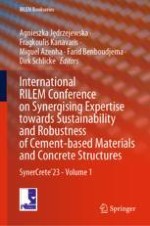2023 | OriginalPaper | Buchkapitel
Numerical Simulation of Chloride Ion Ingression in Mortar Incorporating the Effect of ITZ Using an Integrated COMSOL-IPHREEQC Framework
verfasst von : Siventhirarajah Krishnya, Yogarajah Elakneswaran, Yuya Yoda, Ryoma Kitagaki
Verlag: Springer Nature Switzerland
Aktivieren Sie unsere intelligente Suche, um passende Fachinhalte oder Patente zu finden.
Wählen Sie Textabschnitte aus um mit Künstlicher Intelligenz passenden Patente zu finden. powered by
Markieren Sie Textabschnitte, um KI-gestützt weitere passende Inhalte zu finden. powered by
